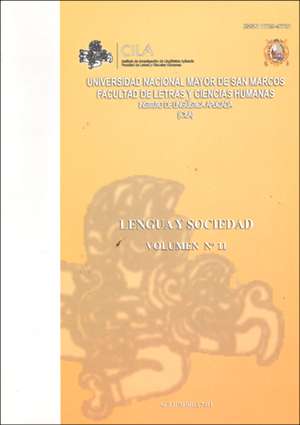Social-historical processes of writing practices in Ashánjnka communities
DOI:
https://doi.org/10.15381/lengsoc.v11i1.22663Keywords:
Amazon, ashaninka of Perené, written activities, written Spanish, 20th centuryAbstract
According to the indigenous population of the Peruvian Amazon, the 20th century constituded a period of great changes. Jn the first decades, important events took place during the rubber period; in the following decades, and as a consequence of the previous events, the indigenous populations began to migrate and have contact with foreign populations. Halfway into the last century, the ashaninka population from High Perene (Chanchamayo-Junin) went through several changes, such as social, economic, and linguistic. Linguisticly, there was competition between Ashaninka-Spanish bilinguism and Ashaninka monolinguism. Jn the 70s and with the beginning of native communities (CCNN), schools were built, institutions of the official system of education, in which new methods were applied. Is in this context that written Spanish becomes a new activity assumed by the ashaninka population.
Downloads
Published
Issue
Section
License
Copyright (c) 2011 Alicia Alonzo Sutta

This work is licensed under a Creative Commons Attribution 4.0 International License.
AUTHORS RETAIN THEIR RIGHTS
a. Authors retain their trade mark rights and patent, and also on any process or procedure described in the article.
b. Authors can submit to the journal Lengua y Sociedad, papers disseminated as pre-print in repositories. This should be made known in the cover letter.
c. Authors retain their right to share, copy, distribute, perform and publicly communicate their article (eg, to place their article in an institutional repository or publish it in a book), with an acknowledgment of its initial publication in the journal Lengua y Sociedad.
d. Authors retain theirs right to make a subsequent publication of their work, to use the article or any part thereof (eg a compilation of his papers, lecture notes, thesis, or a book), always indicating its initial publication in the journal Lengua y Sociedad (the originator of the work, journal, volume, number and date).






